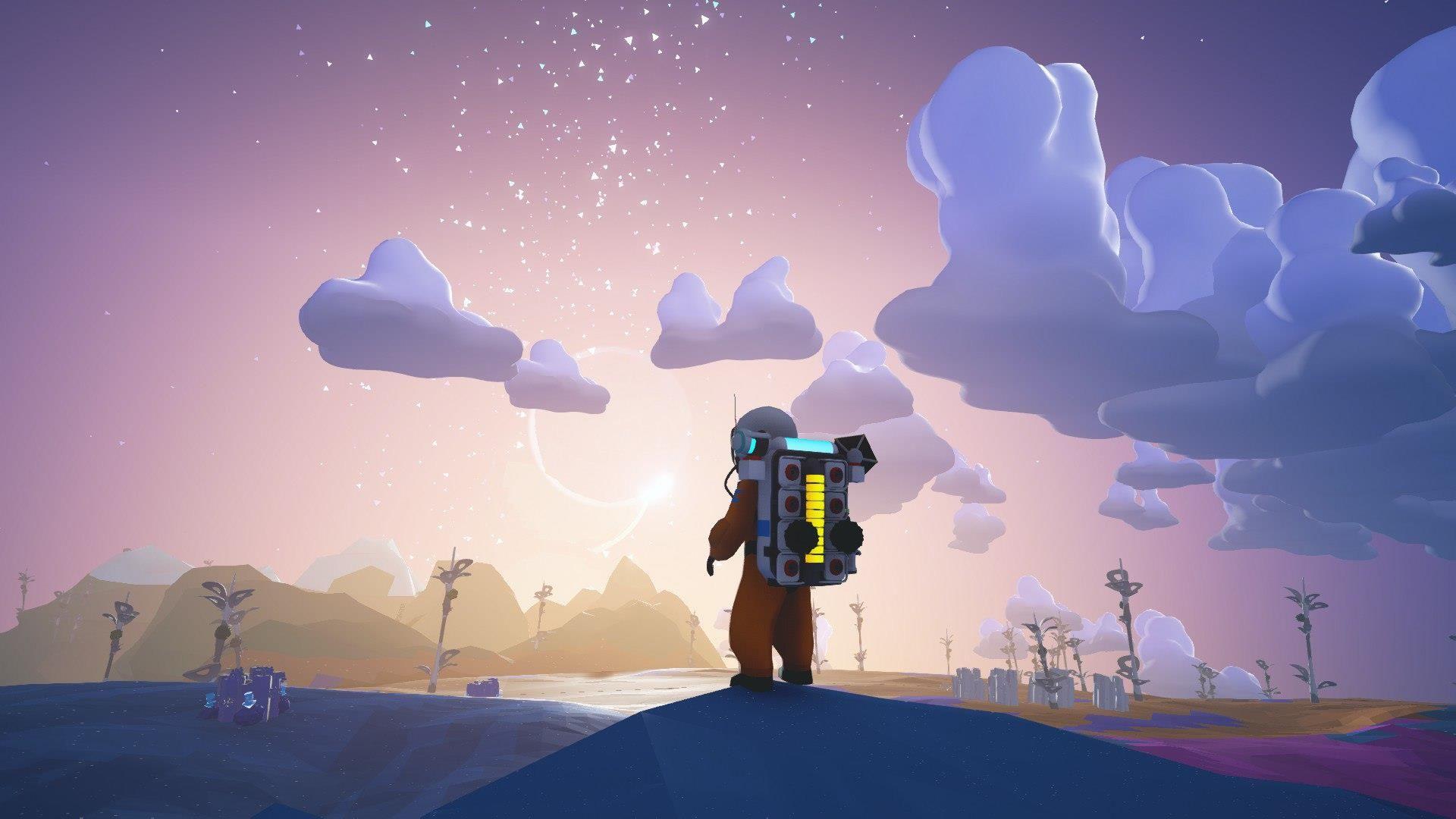

This search for the things you need is, I think, at the very heart of what Astroneer is all about and the satisfaction of discovery is part of the magic. Some will lie beneath your feet luring you into the darkness below, while others will require you to get familiar with the concept of space flight. Unless you head straight for the wiki (which I strongly recommend you avoid) you will need to do a good deal of exploration to find out where these more elusive minerals are hiding. Once you have started to make strides with your base you will soon need resources other than resin and compound. This means as long as you have the basic minerals around you, setting up a base is always an option if (when) you get lost or find a better location. So getting yourself up and running with a base starts with your trusty backpack. Your suits backpack cannot only store these ‘chunks’ of stuff but also has a small fabrication unit built in.

These essential items link a supply of air (and power) from your shelter to wherever you fancy exploring.Įvery time you gather resources they will turn into units which become a physical chunk of whatever they are.

Once you’ve gathered a bit of compound, usually in plentiful supply on the starting planets surface, you can create a few tethers in your backpack. Your suit can hold a reserve of power and O2 but these won’t last long before your tool goes dark and you’re gasping your last breath. The latter will provide you with O2 and is also rigged to eke out a minuscule amount of power. As you touch down for the first time you are given a landing pad and a settlement shelter. The two basic resources you must manage are O2 and power. Once you have enough resin, for example, you can start building conduits and platforms: these then, in turn, support various facilities such as a printer, vehicle bay and a smelting factory. These are then funnelled directly onto empty slots waiting on your backpack. This is done via your trusty multi-drill, a device that allows you to deform the ground and simultaneously gather any resource in that space. Once your chosen avatar bounces from the landing pod, your first task is to learn the ropes while gathering some basic resources. Once you start the game proper you hurtle towards the planet's surface (thankfully courtesy of an autopilot) and watch the game world transform from a one shade texture into a beautiful planetscape. There is also a brief tutorial which does a great job of getting new players up to speed on how items interact and what your main initial goals should be. Since I last played there are now a few cosmetic options such as varied suits, colour schemes and emotes. From here you choose your Astroneer and launch down onto the colourful planet waiting below. The starting menu opens with you quietly drifting in orbit on a space station of sorts. After just a few minutes looking through the developer's website and reading their launch day blog post, it is clear as day that this game comes from the heart. The team has grown from just four founding members to a fierce posse of twenty. They wanted to make this first game reflect their own passion for space exploration and the joy of learning through science. The newly founded System Era Softworks, which is based in Seattle, are just brimming with talent and industry experience. Astroneer is set in the 25th century of space exploration, according to the developers it is an age of discovery in which humans are exploring the distant stars in search of resources and mysterious artefacts.


 0 kommentar(er)
0 kommentar(er)
